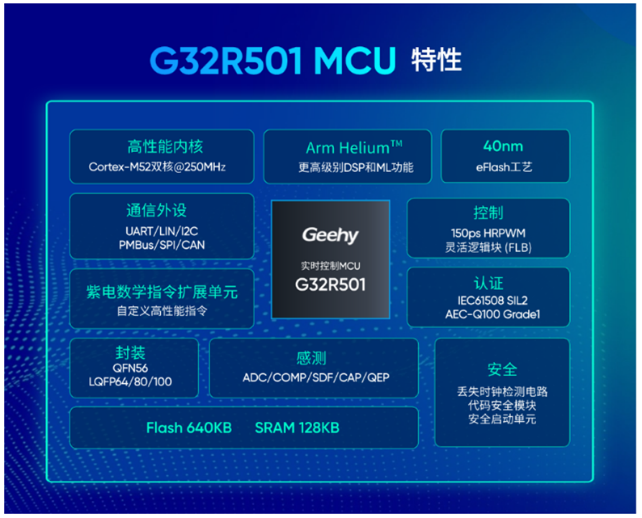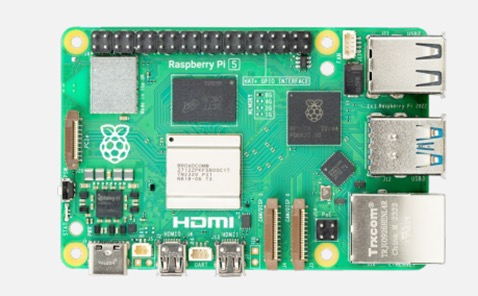2025 Munich Shanghai Electronics Exhibition Reveals Technology Insights: Robotics Industry Booming, How Do Semiconductors Provide Core Support?
April 11, 2025 | Munich Shanghai Electronics Exhibition
Keywords: Robotics, Semiconductors, ExhibitionIntroduction: China’s robotics sector sees explosive growth with strong domestic market share gainsFollowing Yushu humanoid robot’s dance performance at this year’s Spring Festival Gala, the robotics industry has gained even more momentum. Over the past decade, China’s share of global industrial robot installations has risen from approximately one-fifth to over half of global demand. Chinese domestic robot manufacturers have significantly expanded their market share: local suppliers’ share of China’s annual industrial robot installations increased from 30% in 2020 to 47% in 2023.
China’s Dominant Position in the Global Robotics Market
Robotics technology development is accelerating automation levels across various industries. For example, in 2023, nearly two-thirds of industrial robots in the electronics industry were installed in China alone. Chinese manufacturers supplied 54% of industrial robots for this massive domestic market, equivalent to meeting 33% of global demand in the electronics industry. In China’s metal and machinery sectors, domestic robot suppliers captured 85% of the market share.
Government Support Driving Innovation
The Chinese government places high importance on robotics development. Recently, humanoid robots have been positioned as a frontier technology field, and the National Development and Reform Commission has announced the establishment of a national venture capital fund focused on robotics, artificial intelligence, and cutting-edge innovation. This long-term fund plans to attract nearly 1 trillion yuan in capital from local governments and the private sector over the next 20 years.
Future Integration of Technologies
In the future, robotics technology will combine with artificial intelligence, core component upgrades, and intelligent manufacturing in new application scenarios, quickly moving humanoid robot technology from laboratories to scalable, price-competitive production stages.
Semiconductor Technology: The Backbone of Robotics
Of course, robotics technology development relies heavily on semiconductor technology support. At the upcoming Munich Shanghai Electronics Exhibition to be held April 15-17, 2025 at the Shanghai New International Expo Centre, robotics-related technologies will be a highlight, with many semiconductor manufacturers showcasing their advanced, innovative products and technical solutions.
Click this link to register for the exhibition: https://ec.global-eservice.com/?lang=cn&channel=mtxwg
Jisea Semiconductor Showcases Rich Robotics Products and Solutions
Zhuhai Jisea Semiconductor Co., Ltd. (hereinafter referred to as “Jisea”) (Booth No.: N5.513), with years of industry experience in robotics, will showcase many robotics-related products and solutions at the Munich Shanghai Electronics Exhibition.
In terms of products, Jisea will bring the G32R501 real-time control MCU, APM32F402 high-performance general-purpose MCU, APM32M3514 motor control SoC, and motor gate driver chips that can be applied to robot perception systems, joint controllers, BMS controllers, and other modules.
Among them, the G32R501 real-time control MCU adopts a Cortex-M52 dual-core CPU with built-in single/double precision FPU, supporting Arm HeliumTM vector extension technology, which can improve machine learning (ML) performance by 5.6 times and DSP digital signal processing performance by 2.7 times. This effectively reduces the real-time load of the MCU core, thereby reducing the overall complexity of the system and software development difficulty, reducing development costs, and improving product benefits. The G32R5 series also supports custom data path CDE interfaces, which can extend Jisea’s independently developed Zidian mathematical instruction extension unit, supporting various mathematical calculations such as trigonometric functions, Fourier transforms, and complex mathematics at the instruction set level, greatly shortening mathematical calculation time, reducing CPU access latency, and thereby improving the overall real-time performance and intelligence of the system.
 Figure 1: G32R501 real-time control MCU features
(Image source: Geehy Semiconductor)
Figure 1: G32R501 real-time control MCU features
(Image source: Geehy Semiconductor) At the same time, the G32R501 real-time control MCU also integrates high-performance perception, rich control peripherals, and a flexible peripheral interconnection system, meeting the requirements of robot rotary joints, linear joints, and dexterous hand modules for high performance, high precision, and low latency chips.
The APM32M3514 motor control SoC and GHD series motor gate drivers feature high integration and fast response, helping to reduce component count and system complexity to achieve complex motor control in various robot applications.
It’s worth mentioning that Jisea will also launch an encoder-specific MCU this year, providing a more cost-effective option for robot application solutions.
In terms of application solutions, Jisea will showcase reference solutions such as low-voltage sensorless dual-motor, high-voltage servo controller, and absolute encoder, which can play an important role in robot applications in industrial automation, drones, special operations, and other fields.
Over the years, Jisea has always focused on the research and development and innovation of robot chips and solutions. In the future, in addition to memory-computation integration, photonic computation, and ultra-low power perception, edge computing, high-reliability design, and heterogeneous computing are also key technology points for robot chips. Jisea will deploy “MCU+AI” products and continuously evolve products, constantly improving integration, security, algorithm optimization, multi-modal data processing, openness, and scalability to meet the diverse innovation needs of robot application scenarios. At the same time, Jisea will continue to invest in R&D in fields such as multi-core heterogeneous and ultra-low power perception to continuously provide core innovation power for the robot application market.
Mouser Electronics’ Self-Designed Raspberry Pi Robot Debuts at the Exhibition
As a one-stop authorized distributor of electronic components, Mouser Electronics (Booth No.: N2.627) has been focusing on the robotics field for a long time. Mouser Electronics believes that advanced robotics technology, AI-driven systems, and networked physical architectures connecting human-machine collaboration will be key factors driving Industry 5.0 applications.
Mouser Electronics offers a rich selection of semiconductors, electronic components, and industrial automation products, providing customers with fully certified original factory products and a rich technical resource library, including technical resource centers, product datasheets, supplier-specific reference designs, application notes, technical design information, engineering tools, and other useful information to help customers gain an early advantage in the robotics field.
At this Munich Shanghai Electronics Exhibition, Mouser Electronics will take the lead in unfolding the “AI+” technology innovation scroll, joining hands with many well-known manufacturers to explore applications and developments in robotics, automotive electronics, third-generation semiconductors, artificial intelligence, intelligent manufacturing, motor drives, and other fields under the “AI+” wave.
At the same time, Mouser Electronics engineers will share their self-designed Raspberry Pi robot. The project, through the powerful expandability and flexibility of Raspberry Pi 5, has successfully created a robot with emotional interaction functions, featuring voice recognition, emotion analysis, expression display, and motion control. Through the coordination of software and hardware, the robot can recognize users’ emotions and respond with corresponding expressions and actions. In the future, AI algorithms and voice models can be enhanced to further improve the robot’s emotional understanding capabilities.
 Figure 2: Raspberry Pi 5
(Image source: Mouser Electronics)
Figure 2: Raspberry Pi 5
(Image source: Mouser Electronics)In addition, Mouser Electronics will also bring an interactive game that combines technology and fun – “Robot Dog Battle.” There will be multiple intelligent robot dogs competing on the same stage, showing flexible postures and diverse functions. Users can not only experience the charm of robot dogs up close but also get involved personally, controlling robot dogs to complete fun tasks and experiencing the unlimited fun of human-machine interaction!
Humanoid Robot Themed Activities
At the Munich Shanghai Electronics Exhibition opening at the Shanghai New International Expo Centre on April 15-17 this year, the organizers will launch a series of activities including the “Humanoid Robot Display Area” and “Humanoid Robot Innovation Forum”, integrating product display, technology demonstration, application experience, and industry communication. By showcasing new technologies and applications, they will present the unlimited possibilities of robots in future life to the audience.
Humanoid Robot Display Area
Location: Shanghai New International Expo Centre | N3 Hall N3.655 Time: April 15-17, 2025
The exhibition will launch the Humanoid Robot Display Area for the first time, which integrates humanoid robot product display, technology demonstration, application experience, and industry communication. By showcasing new humanoid robot technologies and applications, it will present the unlimited possibilities of humanoid robots in future life to the audience, while also providing an important opportunity for the industry to promote technological innovation and commercial implementation. Whether you are a professional or a general visitor, you can experience the charm and potential of humanoid robot technology here.
Exhibiting Companies:
Humanoid Robot Innovation Forum
Location: Shanghai New International Expo Centre | M47 Conference Room (N5 Hall, 2nd Floor) Time: Afternoon of April 16, 2025
The Humanoid Robot Innovation Forum will be held concurrently with the exhibition, focusing on new humanoid robot technologies, coordinated support of core components, and application industry markets and scenarios, to jointly explore the application and development of humanoid robots in various fields.